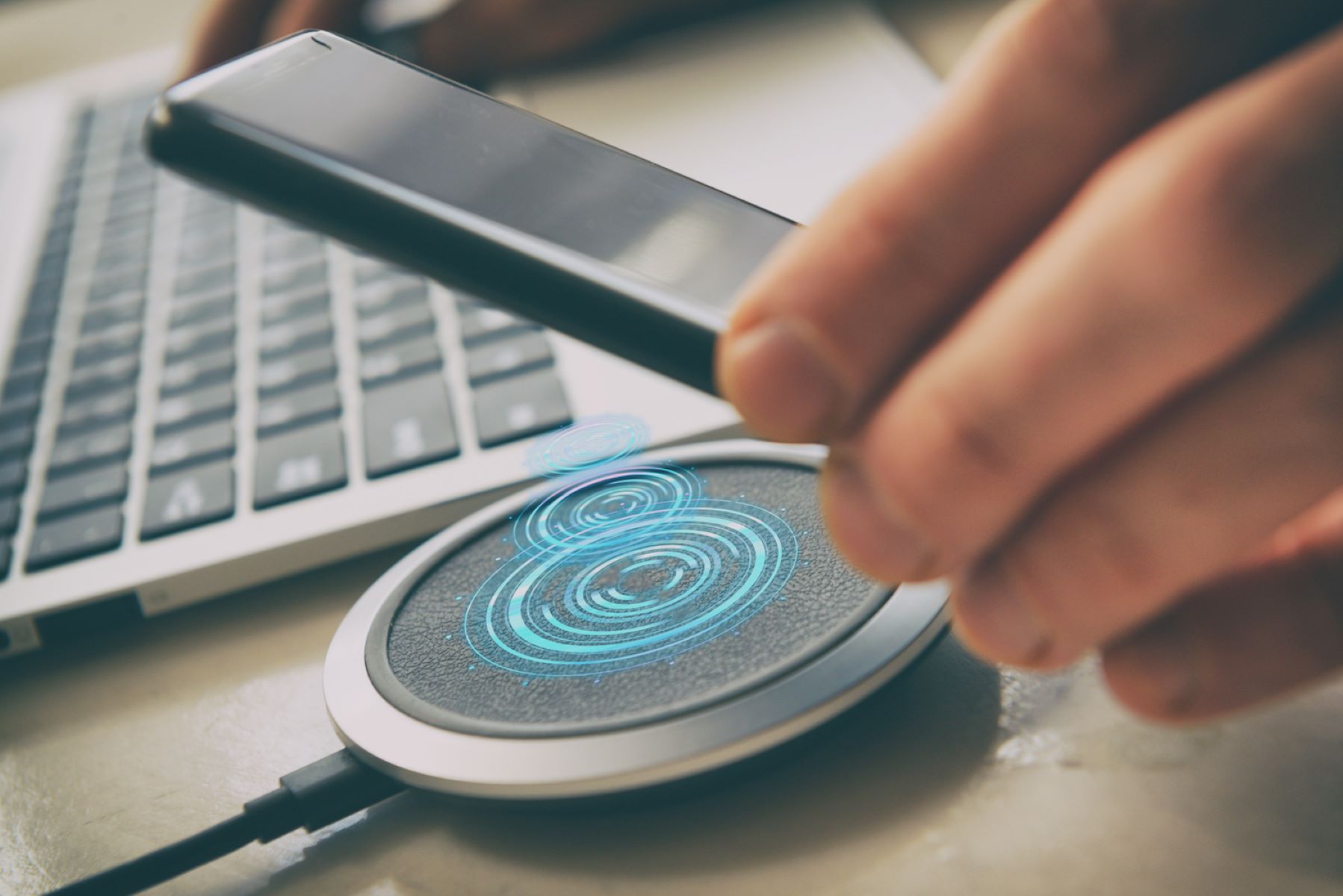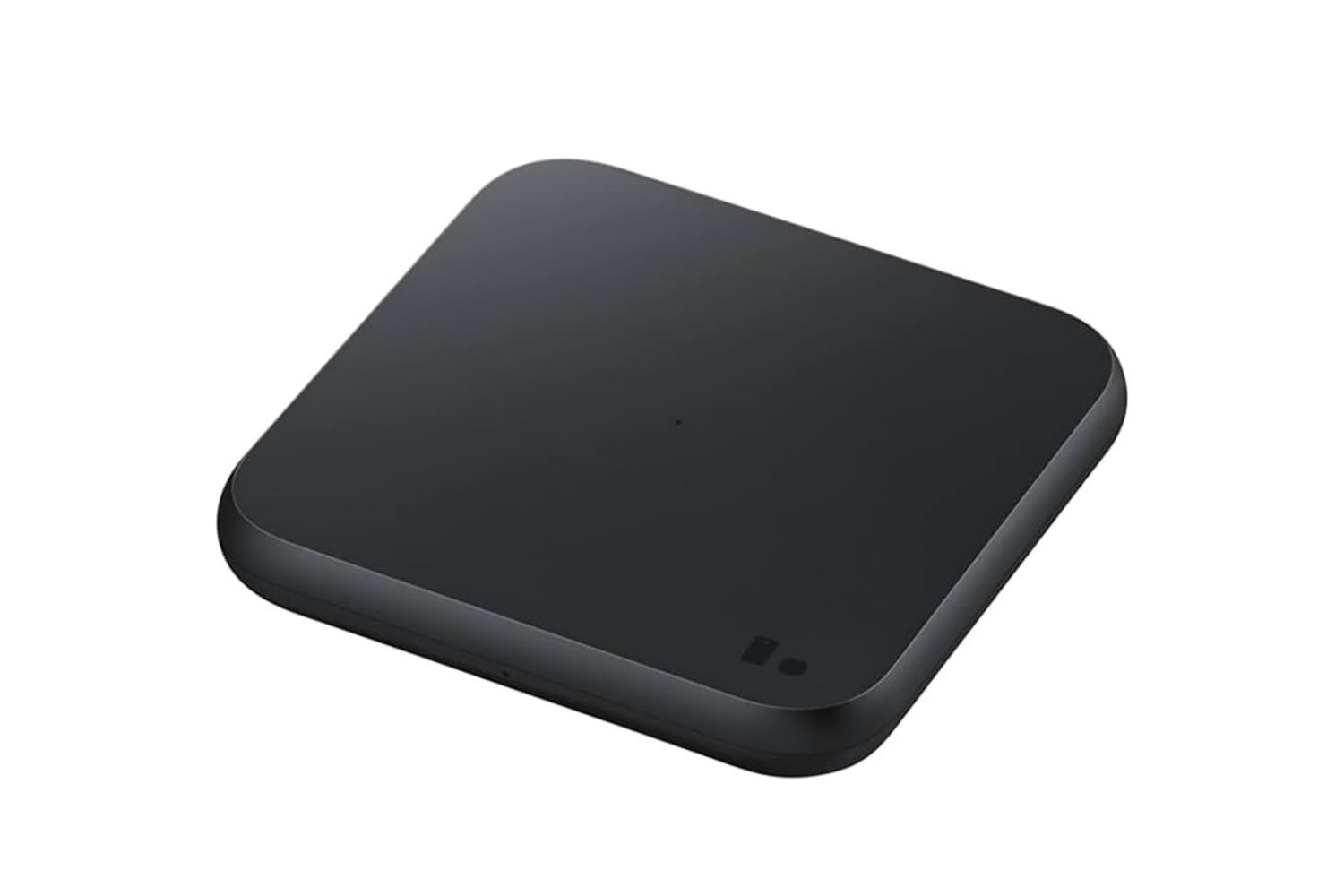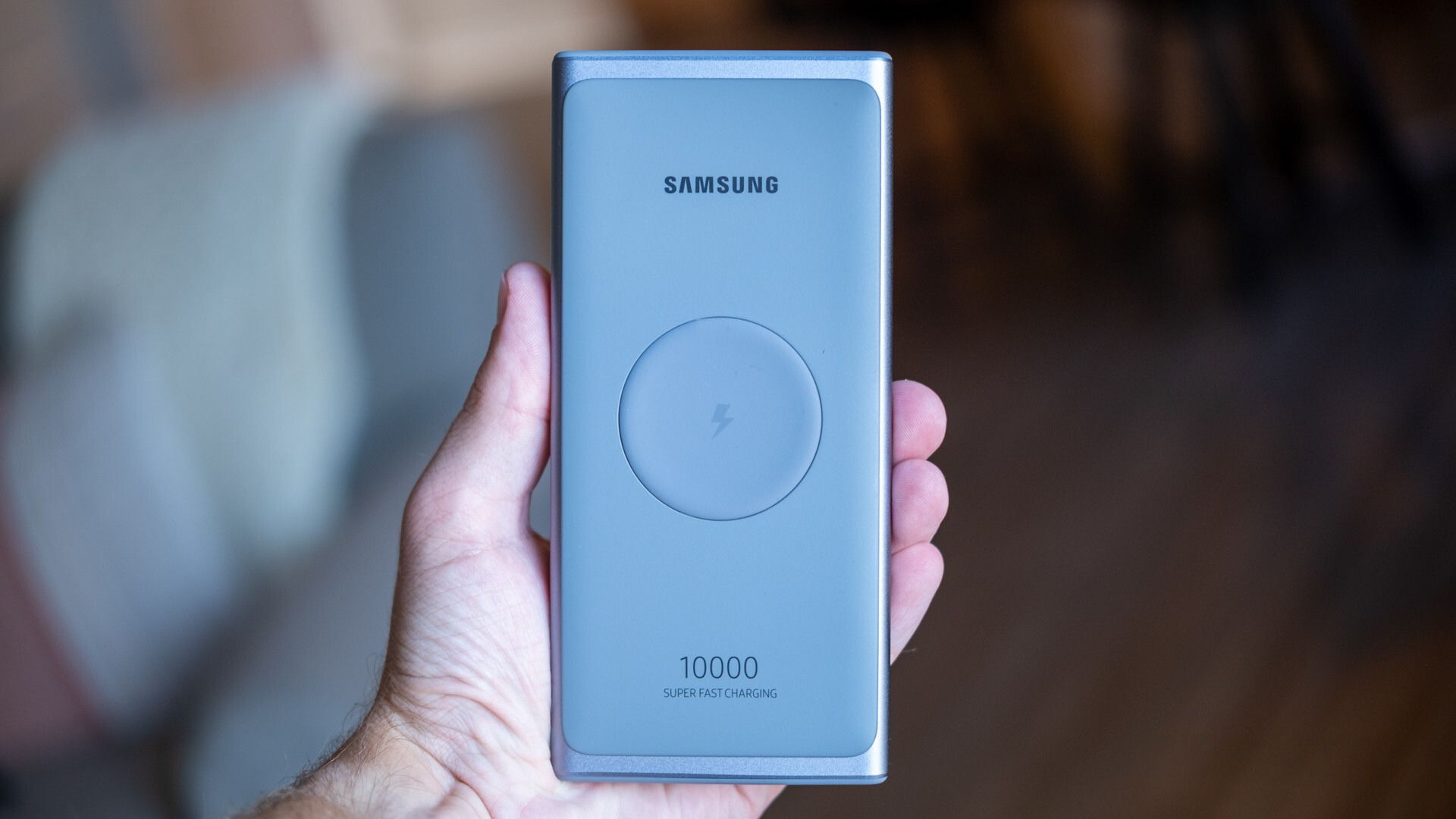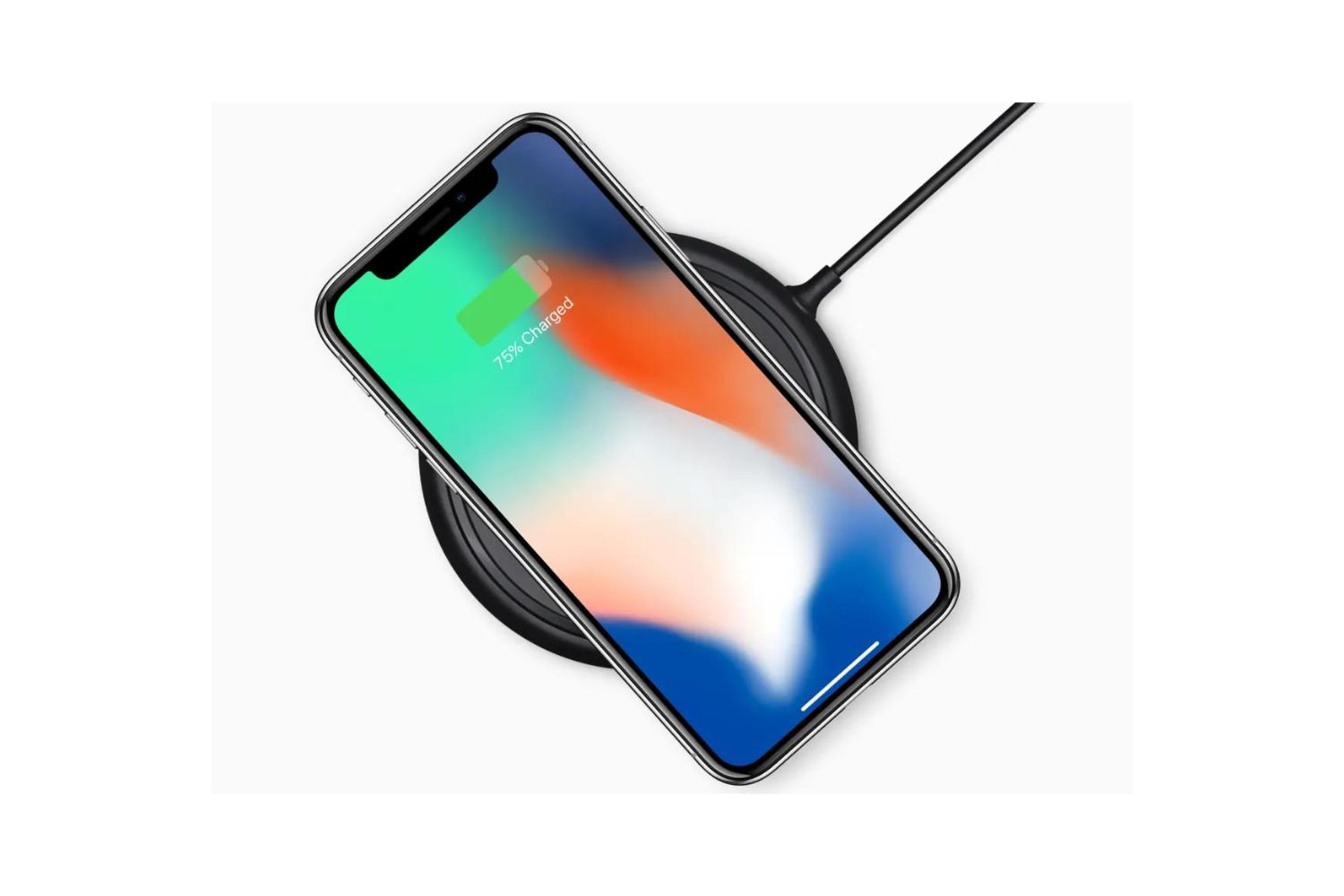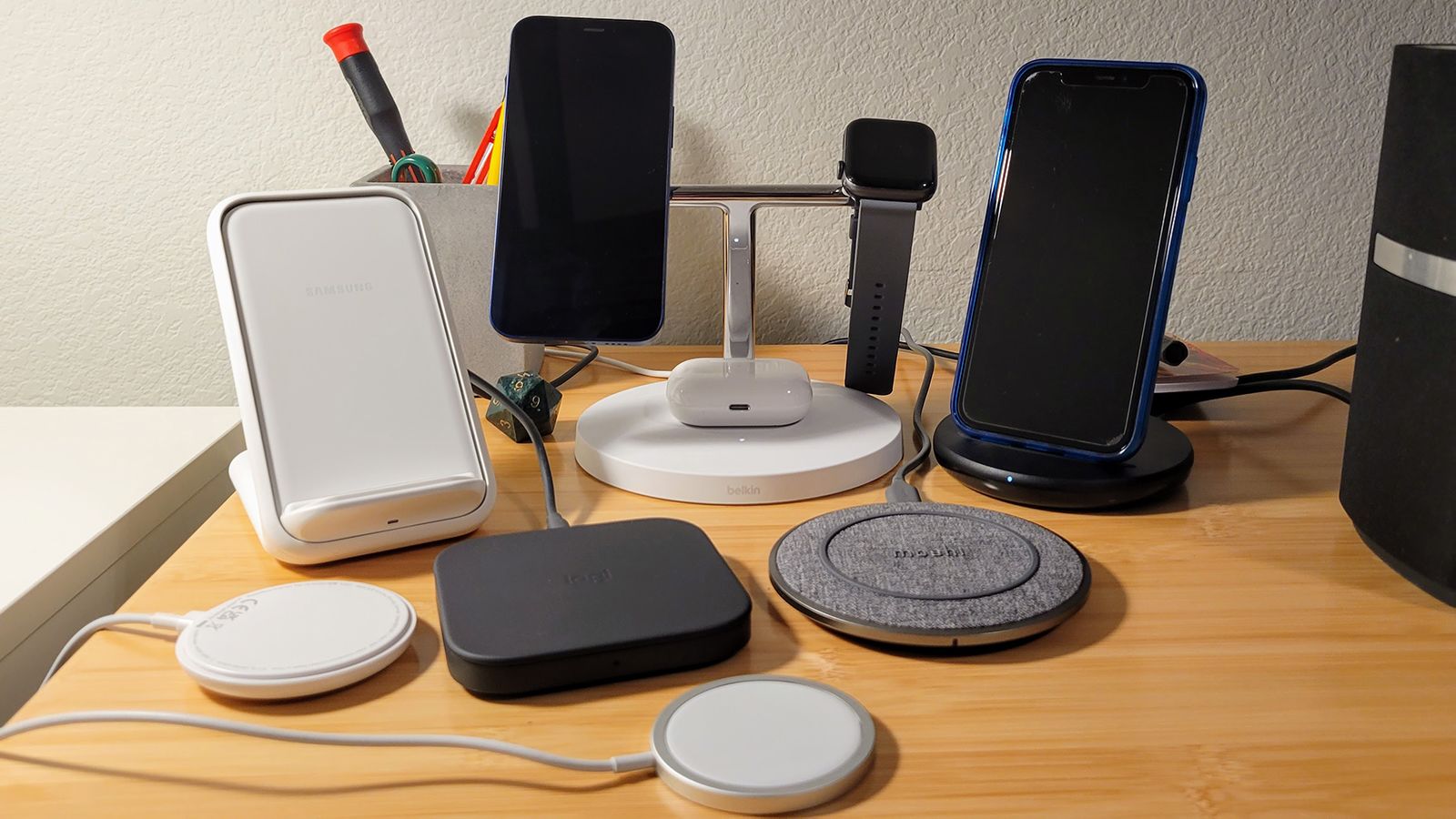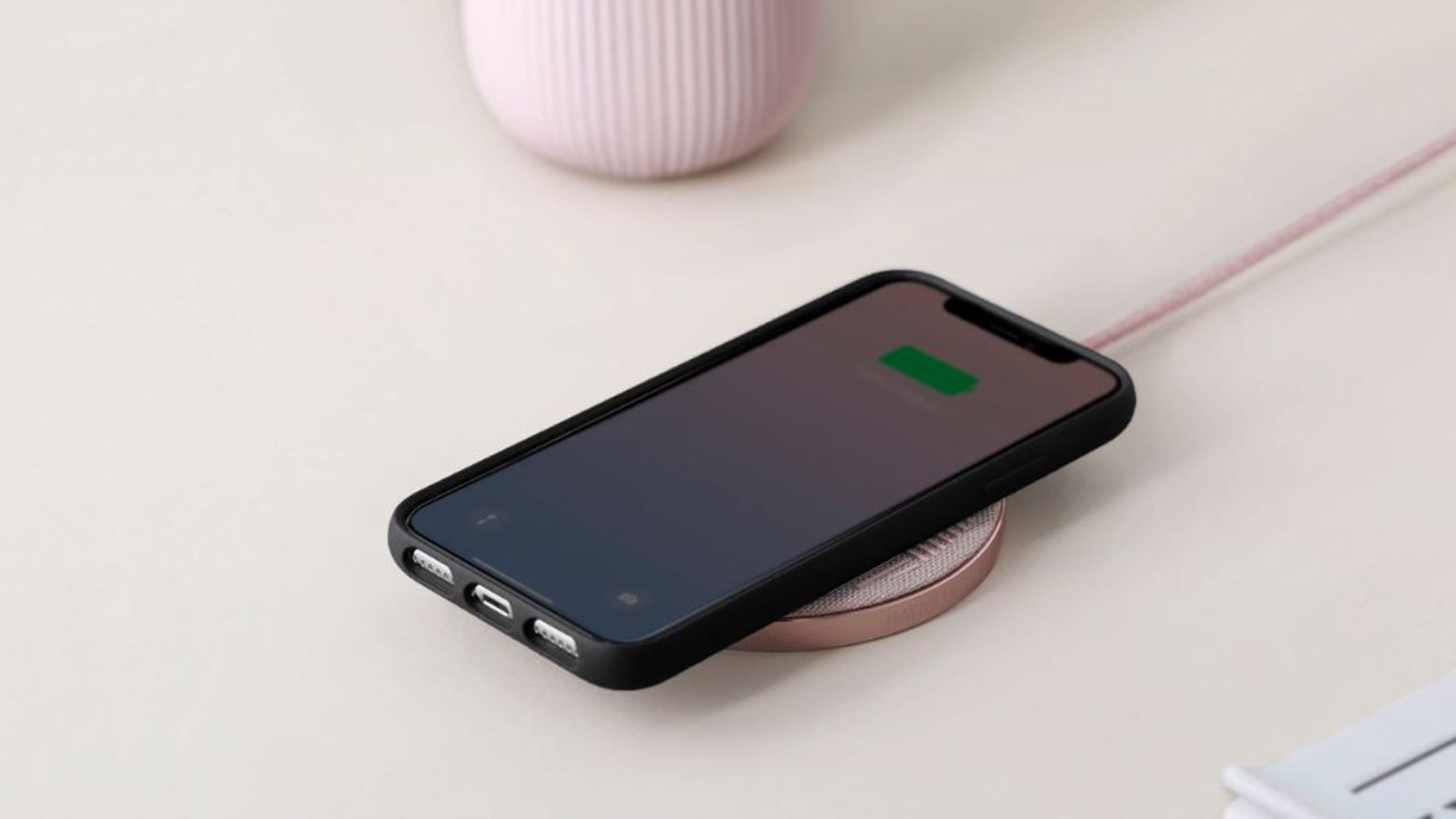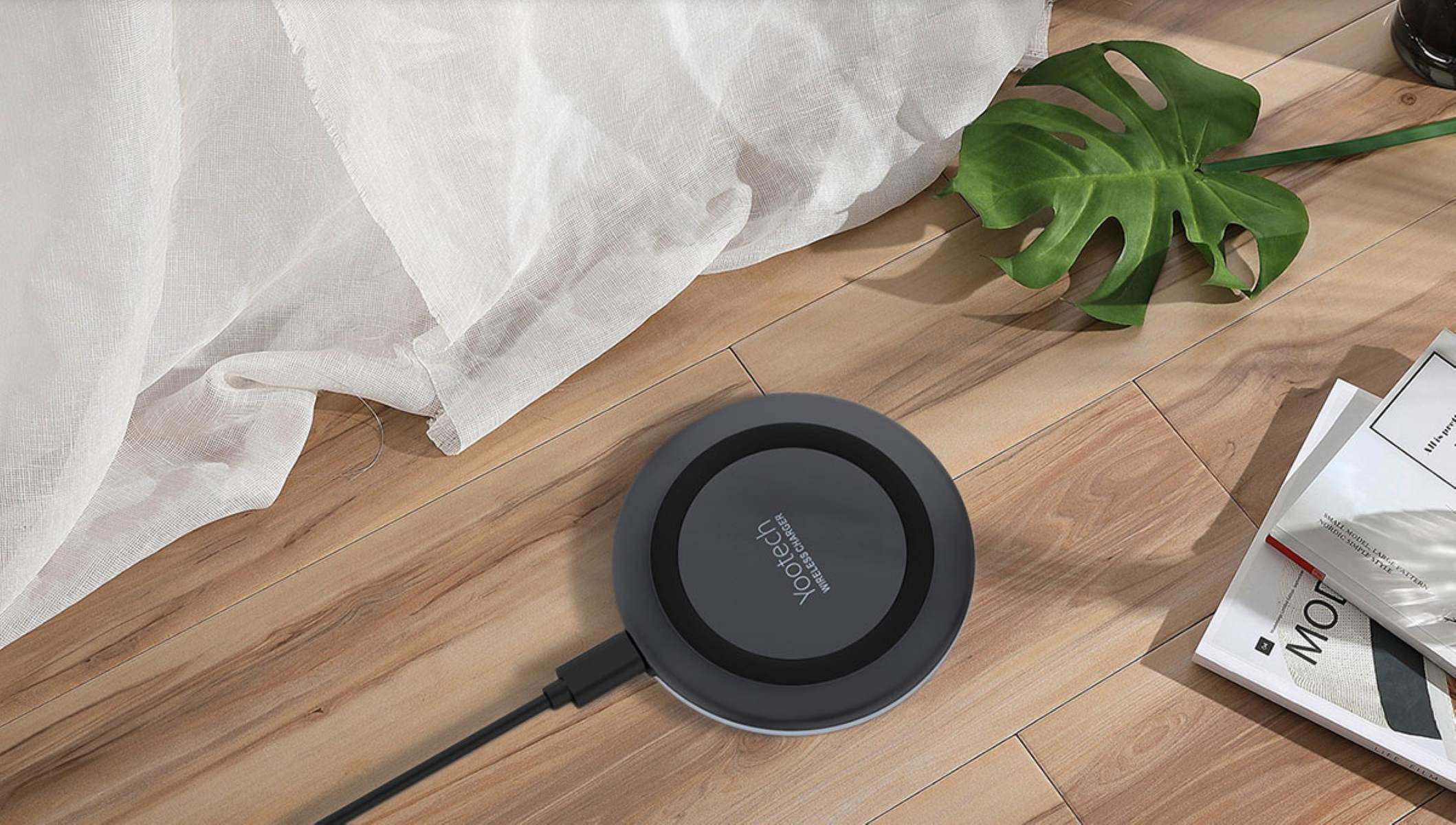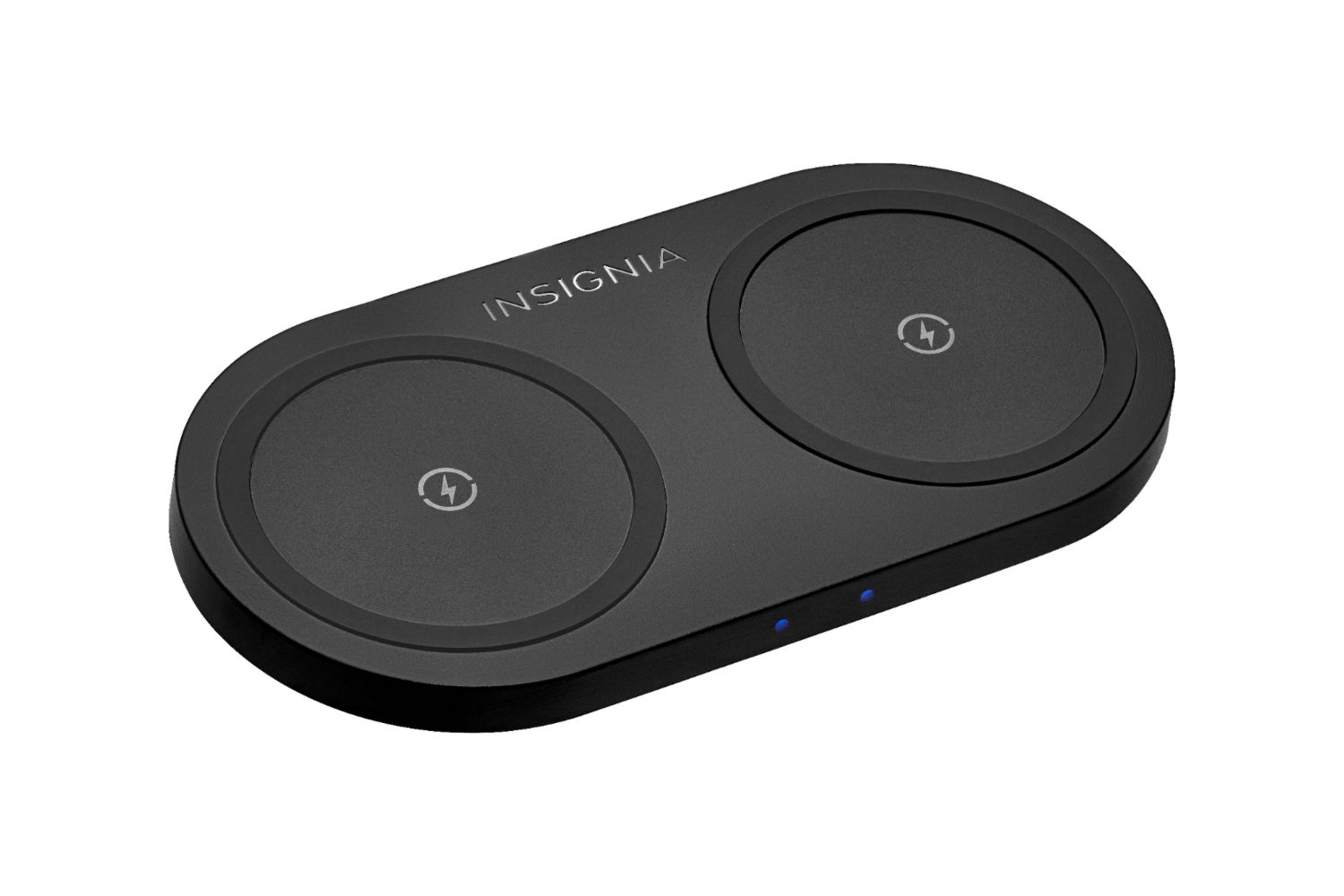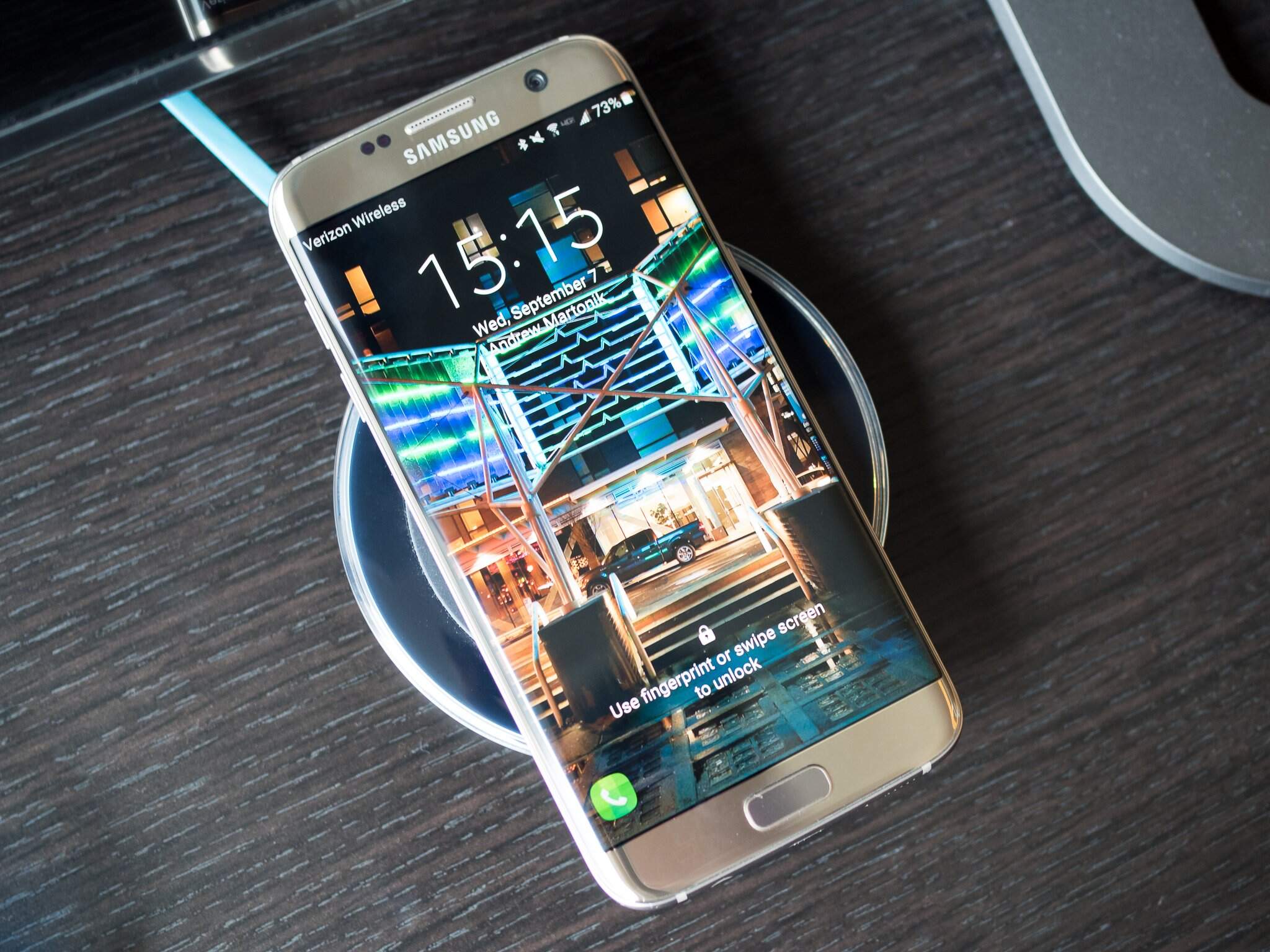Introduction
Wireless charging has become a popular feature in many technological devices today, from smartphones to smartwatches. It offers the convenience of a cable-free charging experience, allowing you to power up your devices effortlessly. But have you ever wondered how wireless chargers actually work? In this article, we will delve into the fascinating world of wireless charging and explore the technology behind it.
Wireless charging, also known as inductive charging or cordless charging, is a method of transferring power from a charging pad or mat to a compatible device without the need for a physical connection. It relies on electromagnetic fields to transfer energy, ensuring a simple and hassle-free charging experience.
The concept of wireless charging is not entirely new. The foundations of this technology can be traced back to the late 19th century when Nikola Tesla experimented with the concept of wireless power transmission. However, it is only in recent years that wireless charging has become more widespread and commercially available.
The convenience of wireless charging cannot be overstated. It eliminates the need for messy cables and allows for easy charging with a simple placement of your device on a charging pad. This is particularly advantageous in scenarios where multiple devices need to be charged simultaneously.
The demand for wireless chargers has increased significantly as more and more devices are equipped with wireless charging capabilities. From smartphones, tablets, and smartwatches to headphones and even electric toothbrushes, the range of devices compatible with wireless charging is growing rapidly.
In this article, we will discuss the various aspects of wireless charging, including its underlying technology, compatible devices, myths and misconceptions, and tips for optimizing wireless charging. By the end of this article, you will have a comprehensive understanding of how wireless chargers work and how to make the most out of this convenient charging solution.
So, let’s dive into the world of wireless charging and unravel the mysteries behind this revolutionary technology.
What is a Wireless Charger?
A wireless charger is a device that enables the charging of compatible devices without the need for a physical connection. Instead of plugging in a cable, you simply place your device on the charging pad or mat, and it starts charging wirelessly. This innovative technology is changing the way we power up our electronic devices.
Wireless chargers use electromagnetic fields to transfer power from the charger to the device. Inside the charger, there is a coil that generates an oscillating magnetic field. When you place your device on the charger, it also contains a coil that can pick up the magnetic field and convert it back into electrical energy to charge the device’s battery.
One of the key components of a wireless charger is the charging pad or mat. It serves as a surface on which you place your device for charging. The pad or mat contains the necessary circuitry and coil to facilitate the transfer of power. Some wireless chargers may have multiple charging spots, allowing you to charge multiple devices simultaneously.
Wireless chargers come in various shapes and sizes. They can be standalone charging pads, integrated into furniture like desks or bedside tables, or even built into vehicles. The design and form factor of wireless chargers continue to evolve, offering more convenience and versatility to users.
It is important to note that not all devices are compatible with wireless charging. To use a wireless charger, your device must have built-in wireless charging capabilities or support an external wireless charging accessory. Common examples of devices that are compatible with wireless charging include smartphones like the iPhone 12, Samsung Galaxy S21, and Google Pixel 5, as well as smartwatches like the Apple Watch and Samsung Galaxy Watch.
As the demand for wireless charging grows, more and more manufacturers are incorporating wireless charging capabilities into their devices. This ensures that users can take advantage of the flexibility and convenience that wireless chargers offer.
In the next section, we will explore how wireless charging actually works and the different technologies used in wireless chargers. So, let’s unravel the science behind wireless charging and gain a deeper understanding of this revolutionary technology.
How Does Wireless Charging Work?
Wireless charging technology functions on the principle of electromagnetic induction. It employs two essential components: a charging pad or mat (transmitter) and a compatible device (receiver) equipped with receiver coils.
When you place your compatible device on the charging pad, the charging pad creates an alternating electromagnetic field. This field induces a current in the receiver coils within the device, converting the electromagnetic energy back into electrical energy.
The key element in wireless charging is the use of oscillating magnetic fields. The transmitter coil in the charging pad generates a magnetic field as it carries alternating current. This magnetic field extends to the receiver coils in the device, which are designed to resonate at the same frequency as the transmitter coil.
When the receiver coils come close to the transmitter coil, they absorb the magnetic field’s energy. This energy is then converted back into electrical energy, which is used to charge the device’s battery. The process of transferring power from the charging pad to the device is seamless and efficient.
It’s important to note that wireless charging relies on close proximity between the charging pad and the device. The strength of the electromagnetic field weakens over distance, which means that the device needs to be placed directly on the charging pad or in very close proximity for optimal charging performance.
There are two primary technologies used in wireless charging: inductive charging and magnetic resonance charging.
Inductive Charging: Inductive charging is the most common technology used in wireless chargers. It involves the use of two coils, one in the charging pad and the other in the device. These coils create a magnetic field to transfer power between them. Inductive charging is efficient and reliable, but it requires close alignment between the coils for effective charging.
Magnetic Resonance Charging: Magnetic resonance charging is a more advanced form of wireless charging. It allows for greater flexibility in device placement and charging multiple devices simultaneously. This technology uses resonant coils that can operate at different frequencies, allowing for better power transfer over short distances. Magnetic resonance charging is still relatively new and is being adopted by some wireless charging devices.
Wireless charging offers several advantages, such as convenience, cable-free charging, and the ability to charge multiple devices simultaneously. However, there are also some drawbacks to consider, including slower charging speeds compared to wired charging and the need for compatible devices.
In the next section, we will explore the Qi wireless charging standard, which has become the universal standard for wireless charging. So, let’s delve into this important aspect of wireless charging and understand its significance in the market.
Qi Wireless Charging Standard
The Qi wireless charging standard, pronounced “chee,” is the global standard developed by the Wireless Power Consortium (WPC). It has become the most widely adopted and recognized standard for wireless charging, ensuring compatibility between different wireless charging devices.
The Qi standard provides a set of guidelines and specifications that manufacturers follow to ensure interoperability and seamless wireless charging experiences. It defines the communication protocols, power levels, and charging frequencies required for Qi-certified devices.
One of the significant benefits of the Qi standard is that it allows for cross-compatibility among various brands and models that support wireless charging. This means that if you have a Qi-certified device, it can be charged on any Qi-compatible charging pad or mat, regardless of the manufacturer.
The Qi standard also supports a range of power levels to accommodate different charging requirements. It can deliver power up to 15 watts, enabling faster charging for compatible devices that can handle higher power inputs. However, it is essential to note that the charging speeds may vary depending on the device’s capabilities and the specific wireless charger being used.
In addition to the power delivery specifications, the Qi standard also includes safety measures to protect devices from overcharging, overheating, and other potential risks. Qi-certified chargers undergo rigorous testing and certification processes to ensure compliance with these safety standards.
Qi wireless charging has garnered widespread adoption across various industries, including smartphones, smartwatches, and even automotive applications. Numerous devices from major manufacturers, such as Apple, Samsung, and Google, are now Qi-certified, making wireless charging a convenient and consistent experience for users.
The availability of Qi-certified charging accessories is also rapidly growing. You can find Qi-compatible charging pads, mats, and even integrated charging solutions in furniture and vehicles. This widespread adoption of the Qi standard ensures that users have a wide range of options when it comes to wireless charging.
It is worth noting that while most wireless chargers in the market are Qi-compatible, not all wireless charging technologies adhere to the Qi standard. Some proprietary wireless charging technologies may require specific chargers provided by the device manufacturers.
By adhering to the Qi wireless charging standard, device manufacturers and consumers benefit from the ease of compatibility and interoperability. It promotes a more accessible and universal wireless charging ecosystem, where devices from different brands can be charged seamlessly, regardless of the specific wireless charging pad or mat being used.
In the next section, we will explore the two primary methods of wireless charging, inductive charging and magnetic resonance charging, to gain a deeper understanding of how these technologies enable cordless charging. So, let’s continue our exploration of wireless charging and its underlying technologies.
Inductive Charging
Inductive charging is the most common method used in wireless charging technologies. It relies on electromagnetic induction to transfer power from the charging pad or mat to the device being charged. Inductive charging has gained widespread adoption due to its efficiency, reliability, and ability to charge a wide range of devices.
The process of inductive charging involves two components: the transmitter, which is the charging pad or mat, and the receiver, which is the device being charged. The transmitter contains a coil that generates an alternating current (AC), creating an oscillating magnetic field.
When the device is placed on the charging pad, it aligns its receiver coil with the transmitter coil. The oscillating magnetic field induces an alternating current in the receiver coil of the device. This generated current is then rectified and used to charge the device’s battery.
The efficiency of inductive charging depends on the alignment and proximity between the transmitter and receiver coils. For optimal charging performance, the device needs to be placed correctly on the charging pad to ensure maximum coupling and power transfer.
Inductive charging offers the advantage of simplicity and convenience. It eliminates the need for cables and connectors, allowing for a clutter-free charging experience. With inductive charging, you can simply place your compatible device on the charging pad, and it will start charging without any physical connection.
It is worth noting that inductive charging may not be as efficient as traditional wired charging methods. There can be some power loss during the power transfer process due to heat dissipation and electromagnetic radiation. This means that wireless charging may take slightly longer to charge your device compared to traditional wired charging.
However, advancements in inductive charging technology have improved its efficiency over the years. The development of higher-power chargers, such as those capable of delivering up to 15 watts of power, has reduced charging times for compatible devices.
Inductive charging is compatible with various devices, including smartphones, smartwatches, headphones, and more. As long as the device is equipped with the necessary receiver coils and supports wireless charging, it can be charged using an inductive wireless charger.
In the next section, we will delve into another method of wireless charging, magnetic resonance charging, which offers unique benefits compared to inductive charging. So, let’s continue our exploration of wireless charging and its different technologies.
Magnetic Resonance Charging
Magnetic resonance charging is an advanced method of wireless charging that offers several advantages over traditional inductive charging. This technology utilizes the concept of resonant coupling to transfer power between the charging pad and the device being charged.
Unlike in inductive charging, which relies on the direct coupling of coils, magnetic resonance charging operates on the principle of resonant magnetic fields. It involves two main components: the transmitter pad and the receiver pad.
The transmitter pad consists of a coil that generates a magnetic field at a specific frequency. The receiver pad, integrated into the device, also contains a coil that resonates at the same frequency as the transmitter. This resonance enables efficient power transfer over a short distance, typically a few centimeters.
Magnetic resonance charging offers several key advantages. One of the significant benefits is the flexibility in device placement. Unlike inductive charging, where precise alignment is required, magnetic resonance charging allows for more significant spatial freedom. This means that you can place your device on the charging pad in a less precise manner and still achieve efficient power transfer.
Another advantage of magnetic resonance charging is the ability to charge multiple devices simultaneously. The resonant coupling between the transmitter and receiver pads allows for the charging of multiple devices placed on the charging pad at the same time. This is a particularly useful feature in situations where you need to charge multiple devices simultaneously, such as a smartphone and a smartwatch.
However, it is important to note that magnetic resonance charging technology is still relatively new and not as widely adopted as inductive charging. The availability of magnetic resonance charging pads and compatible devices may be more limited compared to the traditional inductive charging options.
Furthermore, while magnetic resonance charging offers the benefits of freedom in device placement and simultaneous charging of multiple devices, it may have slightly lower efficiency compared to inductive charging. The additional distance between the transmitter and receiver pads, along with the resonance process, can result in some energy loss during power transfer.
Nevertheless, magnetic resonance charging presents exciting possibilities for the future of wireless charging. It offers improved convenience and versatility, making it an appealing option for users looking to simplify their charging experience.
In the next section, we will discuss the advantages and disadvantages of wireless charging as a whole. This will provide a balanced perspective on the benefits and limitations of this technology. So, let’s continue our exploration of wireless charging and its pros and cons.
Advantages of Wireless Charging
Wireless charging offers several significant advantages that have contributed to its growing popularity and widespread adoption. Let’s explore some of the key advantages of wireless charging:
Convenience: One of the primary benefits of wireless charging is the convenience it provides. With wireless charging, you can simply place your compatible device on a charging pad or mat, eliminating the need for cumbersome cables and connectors. This makes it effortless to charge your device, especially in situations where you need a quick top-up of power.
Clutter-free Environment: Wireless charging helps create a clutter-free environment by eliminating the presence of tangled cables. You no longer need to deal with cables strewn across your desk or nightstand. This not only helps keep your space tidy but also reduces the chances of accidentally damaging or disconnecting your charging cable.
Protection against Port Damage: Regularly inserting and removing charging cables into the charging port of your device can eventually cause wear and tear, potentially leading to damage. Wireless charging eliminates the need for constant plugging and unplugging, providing protection for your device’s charging port and extending its lifespan.
Multiple Device Charging: Many wireless chargers support the ability to charge multiple devices simultaneously. This is particularly useful when you have multiple devices with wireless charging capabilities, such as smartphones, smartwatches, or even wireless earbuds. It allows for a single charging spot to power up all your devices at once.
Future-proofing: As more manufacturers incorporate wireless charging into their devices, opting for wireless charging ensures that your devices remain compatible with the latest charging technologies. By investing in wireless charging solutions, you future-proof your charging capabilities, making it easier to transition to newer devices without the need to replace chargers or cables.
Enhanced Durability: Wireless chargers are designed to be durable and withstand regular use. They are built with high-quality materials and are often equipped with safety features, such as overcharging protection and temperature control. This ensures that your devices and the charging pad are safeguarded during the charging process.
While wireless charging offers many advantages, it is essential to consider the potential drawbacks as well. In the next section, we will explore some of the disadvantages of wireless charging to provide a balanced perspective on this technology. So, let’s continue our discussion of wireless charging and its pros and cons.
Disadvantages of Wireless Charging
While wireless charging offers several advantages, it is important to consider its limitations and potential drawbacks. Let’s explore some of the disadvantages of wireless charging:
Slower Charging Speed: Wireless charging typically takes longer to charge a device compared to traditional wired charging methods. This is because there can be some energy loss during the wireless power transfer process, resulting in lower charging efficiency. However, advancements in wireless charging technology have improved the charging speeds, but they may still be slower compared to wired charging.
Heat Generation: Wireless charging can generate heat during the charging process. The energy transfer between the charging pad and the device can lead to heat buildup, which may affect the charging efficiency and potentially impact the lifespan of the device’s battery. However, wireless chargers are designed with safety measures to mitigate excessive heat buildup and protect the devices being charged.
Distance Limitations: Wireless charging requires close proximity between the charging pad and the device being charged. The distance over which power can be efficiently transferred is limited. If the device is not placed within the required range, the charging process may be less effective or may not work at all. Precise alignment or placement on the charging pad is necessary for optimal charging performance.
Compatibility: Not all devices are compatible with wireless charging. While more and more devices are incorporating wireless charging capabilities, there are still many devices that do not support wireless charging or require additional accessories to enable it. Before investing in a wireless charger, it is crucial to ensure that your device is compatible with this charging method.
Cost: Wireless chargers can be more expensive compared to traditional wired chargers. The technology involved in wireless charging, such as the transmitter and receiver coils, adds to the manufacturing costs. Additionally, there may be additional costs for purchasing multiple wireless chargers if you have multiple devices that need charging. However, as wireless charging becomes more common, the prices are gradually becoming more affordable.
Energy Inefficiency: Wireless charging can be less energy-efficient compared to wired charging. Some amount of energy is lost during the power transfer process, resulting in a lower overall charging efficiency. While advancements in wireless charging technology have improved energy efficiency, it is still an area that can be further optimized.
Considering these disadvantages, it is important to weigh the convenience and advantages of wireless charging against these limitations before deciding to adopt this technology. However, as technology continues to evolve, these disadvantages may be mitigated or addressed in the future.
In the next sections, we will explore different types of wireless chargers, compatible devices, myths and misconceptions, as well as tips for optimizing wireless charging. So, let’s continue our exploration of wireless charging and its various aspects.
Different Types of Wireless Chargers
Wireless chargers come in various types and form factors, offering a range of options to suit different charging needs and preferences. Let’s explore some of the different types of wireless chargers available in the market:
Standalone Charging Pads: Standalone charging pads are the most common type of wireless chargers. They are compact and portable, allowing you to place your device on the pad for charging. These chargers typically have a single charging spot and are compatible with a wide range of devices.
Charging Stands: Charging stands are designed to hold your device upright while charging. They provide a convenient viewing angle, making it easy to view notifications or watch content while your device charges. Charging stands are particularly popular for smartphones and smartwatches.
Charging Docks: Charging docks are similar to charging stands, but they often support charging multiple devices simultaneously. They have designated spots for each device, allowing you to charge multiple devices, such as a smartphone and a smartwatch, in one convenient location.
Integrated Furniture Chargers: Some furniture, such as desks, bedside tables, or lamps, are equipped with built-in wireless charging pads. These chargers are integrated seamlessly into the furniture, offering a clutter-free charging solution. They provide a convenient and aesthetically pleasing way to charge your devices.
Vehicle Chargers: Vehicle chargers are wireless chargers designed specifically for use in cars. They are often integrated into the center console, cup holders, or dashboard of the vehicle. These chargers allow you to charge your devices while on the go, ensuring that you have power during your journeys.
Multi-Device Charging Pads: Multi-device charging pads are wireless chargers with multiple charging spots. They enable simultaneous charging of multiple devices, such as smartphones, smartwatches, and wireless earbuds. These chargers are ideal for users with multiple devices that support wireless charging.
Fast Charging Pads: Fast charging pads are wireless chargers that deliver higher power outputs for faster charging. These chargers can provide power levels up to 15 watts, allowing for rapid charging of compatible devices. Fast charging pads are particularly beneficial when you need to charge your device in a short amount of time.
These are just a few examples of the different types of wireless chargers available. When selecting a wireless charger, consider your specific charging needs, device compatibility, and personal preferences regarding design and form factor.
It’s important to note that no matter the type of wireless charger, ensuring compatibility with your device’s wireless charging standards, such as Qi compatibility, is crucial for a seamless charging experience.
In the next section, we will explore the devices that are compatible with wireless charging, helping you understand if your device can benefit from this convenient charging method. So, let’s continue our exploration of wireless charging and compatible devices.
Compatible Devices for Wireless Charging
Wireless charging has gained popularity and significant adoption across various devices. While not all devices are compatible with wireless charging, many smartphones, smartwatches, and other electronic devices now offer built-in wireless charging capabilities. Let’s explore some of the compatible devices for wireless charging:
Smartphones: Many flagship smartphones from popular brands support wireless charging. Examples include the iPhone 12 series, Samsung Galaxy S21 series, Google Pixel 5, and the latest models from Xiaomi, OnePlus, and Huawei. It is important to check the specifications of your smartphone to confirm if it supports wireless charging.
Smartwatches: Several smartwatches also offer wireless charging capabilities. Notable examples are the Apple Watch, Samsung Galaxy Watch series, and the Fitbit Versa 3. Wireless charging for smartwatches provides added convenience, as you can simply place your watch on a charging pad or dock.
Tablets: Some tablets, like the latest iPad models and select Android tablets, are equipped with wireless charging capabilities. Wireless charging for tablets is beneficial, as it eliminates the need to plug in a cable each time you need to charge your device, providing a seamless charging experience.
Wireless Earbuds: Several wireless earbuds also offer wireless charging cases. Brands like Apple with AirPods (Pro), Samsung with Galaxy Buds (Pro), and Google with Pixel Buds offer wireless charging compatibility. Charging your wireless earbuds wirelessly can be convenient, especially if you already have a wireless charging pad for your other devices.
Other Devices: Some other devices that may be compatible with wireless charging include electric toothbrushes, wireless charging lamps, and even certain laptops equipped with wireless charging options. The compatibility of these devices may vary, so it is important to check the specifications or product details to confirm their wireless charging capabilities.
It is important to note that while many devices offer wireless charging capabilities, not all wireless chargers are compatible with every device. For example, some devices may require specific charging pads or use proprietary wireless charging technologies. Therefore, it is recommended to ensure compatibility between your device and the wireless charger before purchasing or using it.
Wireless charging compatibility has become a common feature in the latest devices. With more manufacturers embracing wireless charging, the range of devices compatible with this convenient charging method continues to expand.
In the next section, we will address some common myths and misconceptions about wireless charging, helping to separate fact from fiction and provide accurate information about this technology. So, let’s dispel some myths and explore the truth about wireless charging.
Myths and Misconceptions about Wireless Charging
As wireless charging gains popularity, several myths and misconceptions have emerged about this technology. Let’s address some of the common myths and misconceptions and uncover the truth behind them:
Myth 1: Wireless charging is slow compared to wired charging.
Reality: While wireless charging may be slower than certain wired charging methods, advancements in wireless charging technology have significantly improved charging speeds. Fast charging wireless chargers can deliver higher power outputs, allowing for quicker charging times. However, it’s important to note that charging speeds may vary depending on the device’s capabilities and the specific wireless charger being used.
Myth 2: Wireless charging damages the device’s battery.
Reality: Wireless charging, when used properly with compatible devices, does not harm the device’s battery. Wireless chargers are designed with built-in safety mechanisms, such as temperature control and overcharging protection, to prevent damage to the device during the charging process. It is important to use certified wireless chargers that comply with industry standards for optimal safety.
Myth 3: Wireless charging produces excessive heat.
Reality: While wireless charging can generate some heat, it is within acceptable limits. The charging pad and device incorporate heat management systems to dissipate heat effectively and prevent overheating. Wireless charging technology has undergone rigorous testing and certification to ensure safe heat regulation during the charging process.
Myth 4: Wireless charging is not energy-efficient.
Reality: Wireless charging has become more energy-efficient over the years. Although there can be some energy loss during the power transfer process, advancements in technology and the adoption of industry standards, such as the Qi standard, have improved energy efficiency. Wireless chargers undergo testing to meet specific efficiency criteria and minimize energy wastage.
Myth 5: Wireless charging is only for high-end devices.
Reality: While wireless charging was initially integrated into high-end devices, it has become more prevalent across a broader range of devices. Many mid-range smartphones, smartwatches, and other electronic devices now offer built-in wireless charging capabilities. The availability of wireless charging accessories has also increased, providing options for various devices and price ranges.
Myth 6: Wireless charging pads are not universal.
Reality: The Qi wireless charging standard has become the global standard for wireless charging, ensuring compatibility among different devices and charging pads. Most wireless charging pads and mats in the market adhere to the Qi standard, allowing cross-compatibility between different brands and devices. However, it is important to ensure that your device supports the Qi standard for seamless compatibility.
By dispelling these myths and misconceptions, it becomes clear that wireless charging is a safe and efficient method for powering up devices. Understanding the realities of wireless charging helps users make informed decisions and take full advantage of this technology’s convenience.
In the next section, we will provide some tips for optimizing wireless charging, ensuring that you get the best charging experience with your wireless charger. So, let’s explore how to make the most out of wireless charging.
Tips for Optimizing Wireless Charging
If you want to maximize the efficiency and performance of your wireless charging experience, here are some helpful tips:
1. Use a compatible wireless charger: Ensure that your wireless charger is compatible with your device’s wireless charging standards, such as the Qi standard. Using a certified wireless charger that complies with industry standards will ensure optimal charging performance and safety.
2. Remove metal objects or cases: Remove any metal objects, such as coins or keys, from the charging area. Metal objects can interfere with the wireless charging process and reduce charging efficiency. Additionally, some thick or metal cases can hinder wireless charging, so consider using a wireless charging-friendly case or removing the case during charging.
3. Align the device properly: Place your device correctly on the charging pad or stand. Align the receiver coil on the device with the transmitter coil on the charger. Proper alignment ensures maximum coupling and efficient power transfer, resulting in faster and more effective charging.
4. Charge in a cool environment: Avoid exposing your device and wireless charger to high temperatures. Heat can reduce charging efficiency and affect the lifespan of the device’s battery. Place your wireless charger in a well-ventilated area and keep it away from direct sunlight or sources of heat.
5. Keep firmware/software up to date: Check for firmware or software updates for both your wireless charger and your device. Updates can improve compatibility, performance, and efficiency, ensuring optimal wireless charging functionality.
6. Optimize charging pad placement: If you are using a multi-device charging pad or stand, ensure that each device’s placement does not obstruct other devices or overlap charging spots. Avoid stacking devices on top of each other, as this may impact charging efficiency.
7. Use appropriate power source: Ensure that your wireless charger is connected to a reliable power source. Use the original power adapter provided with the wireless charger or a compatible one to ensure sufficient power supply for efficient charging.
8. Avoid using thick or heat-absorbing materials: If you are using a charging stand or dock, avoid placing thick or heat-absorbing materials between the device and the charger. These materials can impede charging efficiency and increase heat build-up, affecting the charging process and device performance.
9. Charge overnight or when not in immediate use: Wireless charging is convenient for overnight charging or when you don’t need immediate access to your device. This allows you to take advantage of the slower charging speeds without interrupting your device’s usage throughout the day.
10. Remove unnecessary notifications and background activities: Close unnecessary apps and disable background activities that may consume power while your device is charging. This can help optimize the charging process and minimize power consumption.
By following these tips, you can ensure an optimized wireless charging experience, maximizing the convenience and benefits of wireless charging for your devices.
Now that we have explored various aspects of wireless charging, including its technology, compatibility, myths, and optimization tips, you have a comprehensive understanding of this convenient charging method.
Remember to choose a high-quality wireless charger, ensure compatibility, and implement the best practices for optimal wireless charging performance.
If you have any more questions or need further assistance, feel free to ask!
Conclusion
Wireless charging has revolutionized the way we power our devices, offering convenience and simplifying our daily lives. In this article, we have explored the fascinating world of wireless charging, delving into its technology, compatibility, myths, and optimization tips.
We began by understanding the concept of wireless charging and how it works through electromagnetic induction. We learned about the Qi wireless charging standard, which ensures interoperability among different wireless charging devices.
Inductive charging and magnetic resonance charging were discussed as the two primary methods of wireless charging, each with its own advantages and applications.
Throughout the article, we debunked common myths and misconceptions about wireless charging, providing accurate information to help users make informed decisions about this technology.
Furthermore, we explored the different types of wireless chargers available, including standalone charging pads, charging stands, integrated furniture chargers, and vehicle chargers, among others, catering to various charging needs and preferences.
We also highlighted the compatibility of wireless charging with smartphones, smartwatches, tablets, wireless earbuds, and other devices, ensuring an understanding of which devices can benefit from this convenient charging method.
To address some of the drawbacks, we discussed the potential slower charging speeds, heat generation, distance limitations, compatibility challenges, and the cost of wireless chargers.
Finally, we provided valuable tips for optimizing wireless charging, maximizing efficiency, and getting the best charging experience with your wireless charger.
With wireless charging becoming increasingly prevalent and new technologies advancing, it is essential to stay informed and understand the intricacies of wireless charging. By doing so, you can fully enjoy the convenience, clutter-free experience, and flexibility that wireless charging offers.
We hope that this comprehensive exploration of wireless charging has provided you with valuable insights and knowledge. As technology continues to evolve, wireless charging is expected to become more efficient, widely adopted, and an essential part of our daily lives.
If you have any further questions or need assistance, don’t hesitate to reach out. Embrace the wireless charging revolution and enjoy the freedom it provides!







